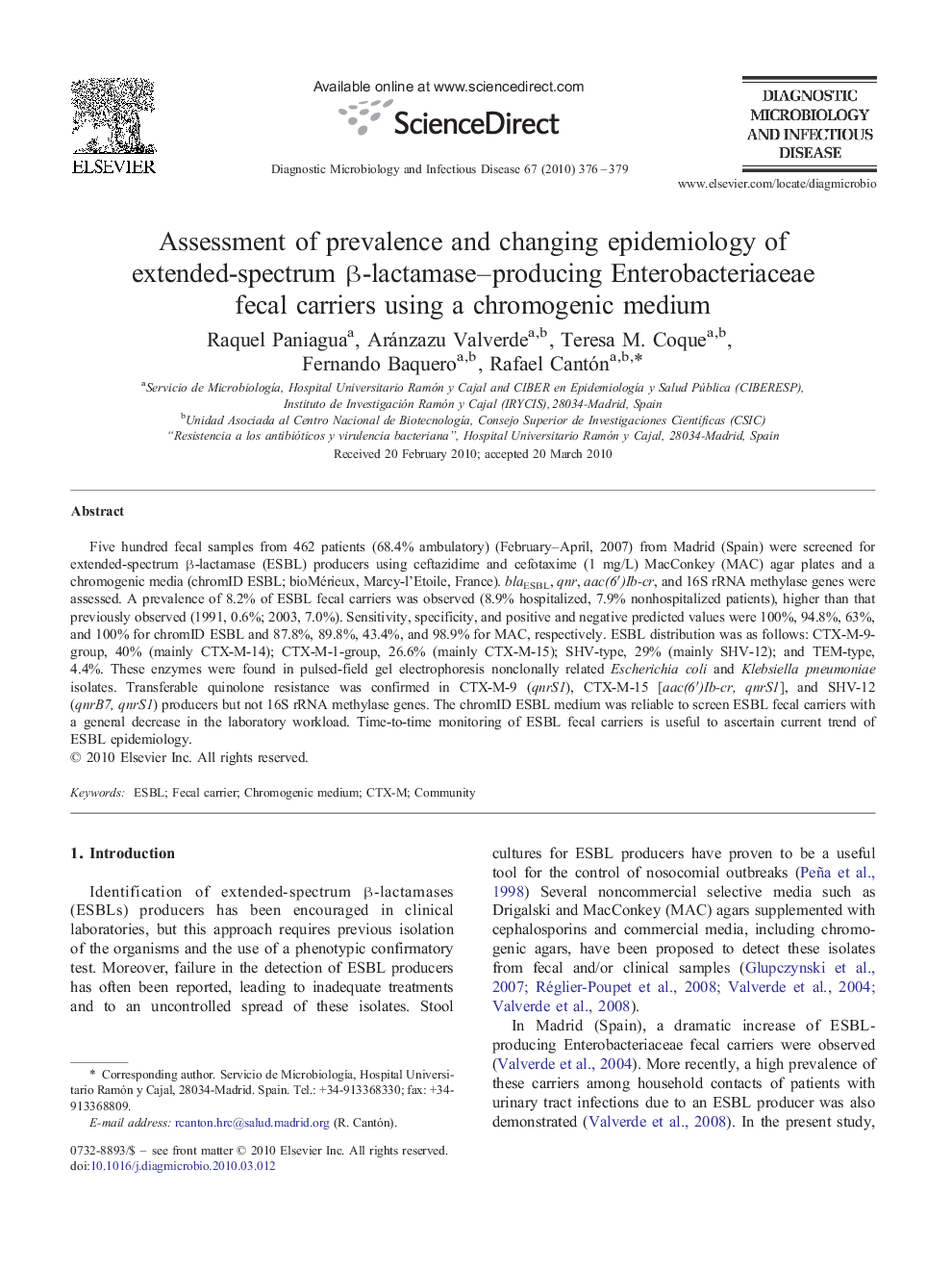| Article ID | Journal | Published Year | Pages | File Type |
|---|---|---|---|---|
| 3347990 | Diagnostic Microbiology and Infectious Disease | 2010 | 4 Pages |
Five hundred fecal samples from 462 patients (68.4% ambulatory) (February–April, 2007) from Madrid (Spain) were screened for extended-spectrum β-lactamase (ESBL) producers using ceftazidime and cefotaxime (1 mg/L) MacConkey (MAC) agar plates and a chromogenic media (chromID ESBL; bioMérieux, Marcy-l'Etoile, France). blaESBL, qnr, aac(6′)Ib-cr, and 16S rRNA methylase genes were assessed. A prevalence of 8.2% of ESBL fecal carriers was observed (8.9% hospitalized, 7.9% nonhospitalized patients), higher than that previously observed (1991, 0.6%; 2003, 7.0%). Sensitivity, specificity, and positive and negative predicted values were 100%, 94.8%, 63%, and 100% for chromID ESBL and 87.8%, 89.8%, 43.4%, and 98.9% for MAC, respectively. ESBL distribution was as follows: CTX-M-9-group, 40% (mainly CTX-M-14); CTX-M-1-group, 26.6% (mainly CTX-M-15); SHV-type, 29% (mainly SHV-12); and TEM-type, 4.4%. These enzymes were found in pulsed-field gel electrophoresis nonclonally related Escherichia coli and Klebsiella pneumoniae isolates. Transferable quinolone resistance was confirmed in CTX-M-9 (qnrS1), CTX-M-15 [aac(6′)Ib-cr, qnrS1], and SHV-12 (qnrB7, qnrS1) producers but not 16S rRNA methylase genes. The chromID ESBL medium was reliable to screen ESBL fecal carriers with a general decrease in the laboratory workload. Time-to-time monitoring of ESBL fecal carriers is useful to ascertain current trend of ESBL epidemiology.
